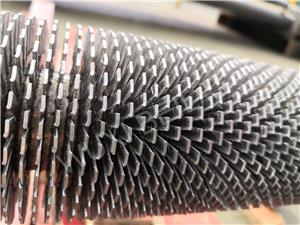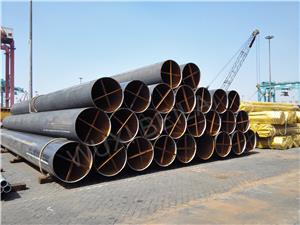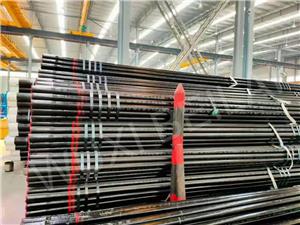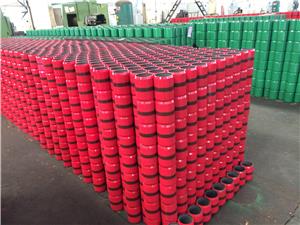Comprehensive Low Temperature Pipe Installation Guide — BEILAI Expertise
Comprehensive Low Temperature Pipe Installation Guide — BEILAI Expertise
BEILAI introduces a detailed low temperature pipe installation guide for industries requiring reliable cryogenic and sub-zero piping systems. As a trusted low temperature pipe supplier, BEILAI emphasizes best practices, safety measures, and long-term durability.
Introduction to Low Temperature Pipe Systems
A low temperature pipe is specifically designed to perform under extremely cold conditions, often ranging from -45°C to -196°C depending on the application. These pipes are used in LNG, petrochemical, aerospace, food processing, and other industries where cryogenic fluids are transported. Installing such systems requires adherence to strict standards, and this low temperature pipe installation guide serves as a comprehensive resource for engineers and technicians.
Why Proper Installation is Critical
Failure in a low temperature pipe system can cause leaks, operational downtime, and safety hazards. A well-prepared low temperature pipe installation guide ensures:
Structural integrity of the low temperature pipe during thermal contraction and expansion.
Effective insulation to minimize energy loss and ice formation.
Compliance with safety regulations and industry standards.
Longevity and reduced maintenance costs.
Step 1: Planning and Preparation
Every successful project begins with careful planning. The low temperature pipe installation guide highlights the following preparatory steps:
Material verification: Confirm that the low temperature pipe meets the required standards such as ASTM A333, ASTM A420, or equivalent grades suitable for sub-zero service.
Site inspection: Assess environmental conditions and ensure the site is ready for low temperature pipe delivery and handling.
Layout design: Incorporate allowances for pipe contraction, stress analysis, and insulation thickness in the piping layout.
Step 2: Handling and Storage
According to the low temperature pipe installation guide, improper handling may compromise performance. BEILAI recommends:
Store low temperature pipe on padded supports to prevent dents and scratches.
Protect pipes from moisture and contaminants before installation.
Lift with slings or spreader bars to avoid surface damage.
Step 3: Welding and Joining Techniques
Welding is one of the most critical stages in this low temperature pipe installation guide. Special considerations include:
Preheating is generally avoided for low temperature pipe materials, but interpass temperatures must be controlled.
Qualified welders must follow procedures developed specifically for cryogenic piping.
Post-weld heat treatment may be required depending on alloy type and service conditions.
Each low temperature pipe joint should be visually inspected and tested using NDT methods such as radiography or ultrasonic testing to guarantee quality.
Step 4: Insulation and Jacketing
Thermal insulation is essential for any low temperature pipe installation guide. Effective insulation reduces heat ingress and prevents frost heave:
Use closed-cell insulation materials resistant to moisture penetration.
Apply vapor barriers to protect the low temperature pipe from condensation.
Finish with jacketing for mechanical protection against weather and impact.
Step 5: Testing and Commissioning
Testing validates the entire system. This low temperature pipe installation guide emphasizes:
Hydrostatic or pneumatic testing: Conducted under controlled conditions to check pressure resistance of the low temperature pipe.
Leak detection: Use helium or nitrogen tracing methods for cryogenic systems.
System flushing: Clean the low temperature pipe to remove any debris before operation.
Step 6: Maintenance and Monitoring
Installation is not the end of the journey. The low temperature pipe installation guide requires periodic maintenance:
Schedule inspections for cracks or material degradation in the low temperature pipe.
Check insulation integrity to prevent ice build-up.
Use sensors to monitor temperature and pressure along the low temperature pipe system.
Industry Applications
BEILAI supplies low temperature pipe for a range of industries. Common low temperature pipe installation guide applications include:
LNG Terminals: Safe transfer of liquefied natural gas.
Chemical Plants: Handling ammonia, ethylene, and other cryogenic fluids.
Aerospace: Fuel delivery systems for rockets and space vehicles.
Food Processing: Cryogenic freezing lines.
Best Practices and Safety Tips
This low temperature pipe installation guide is not complete without safety recommendations:
Always wear PPE when handling low temperature pipe materials.
Maintain proper ventilation when testing with inert gases.
Ensure emergency shutdown systems are functional during commissioning.
Conclusion: BEILAI’s Expertise in Low Temperature Pipe Systems
As industries continue to push the boundaries of cryogenic technology, reliable piping systems are more essential than ever. This low temperature pipe installation guide from BEILAI demonstrates our dedication to safety, efficiency, and durability. By following these steps, operators can maximize the lifespan and performance of every low temperature pipe system. Contact BEILAI today to access expert support for your next project.




